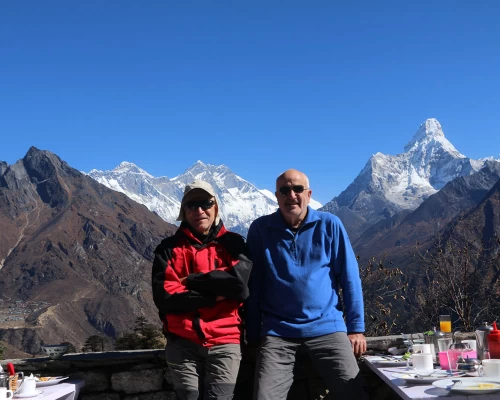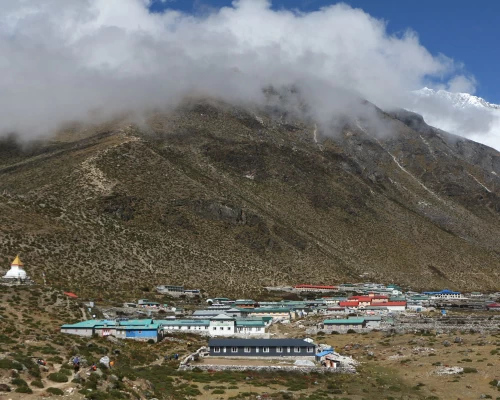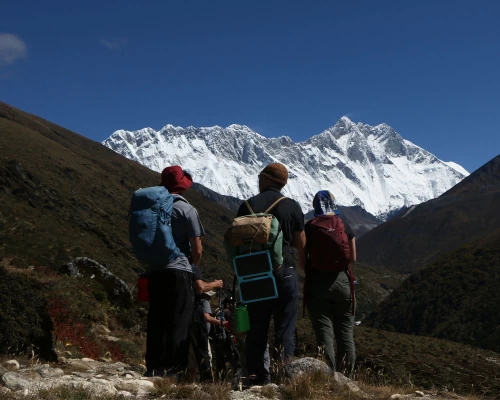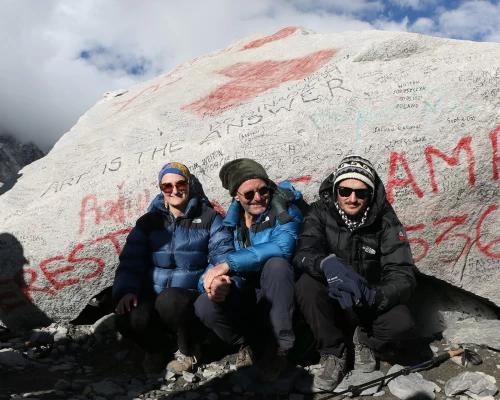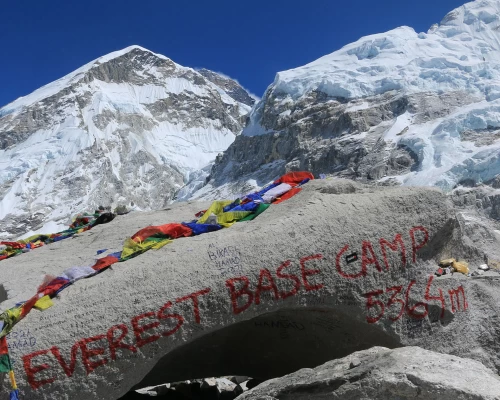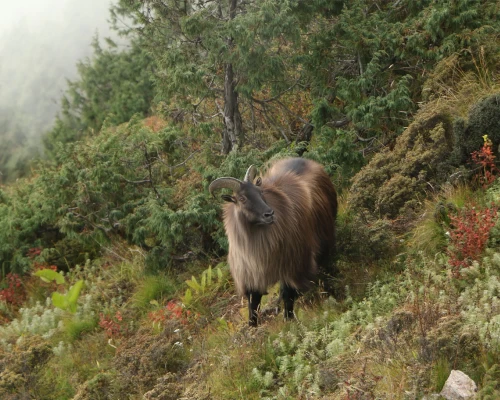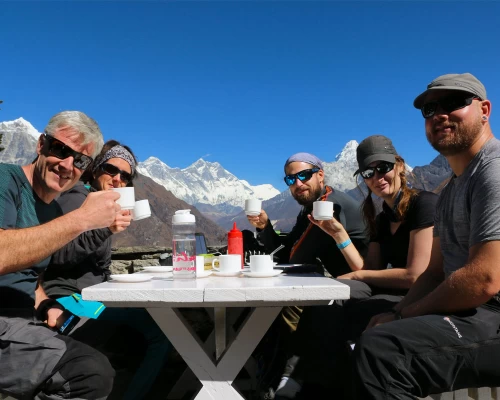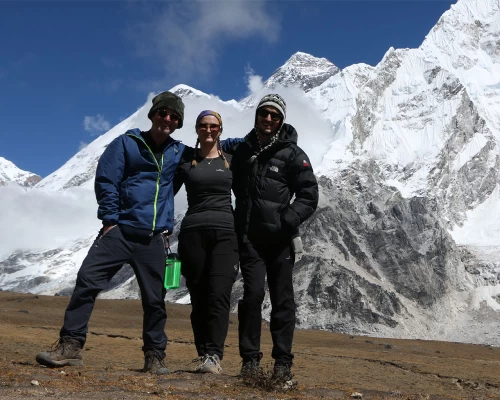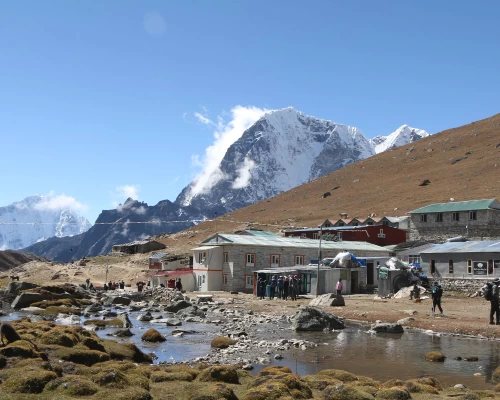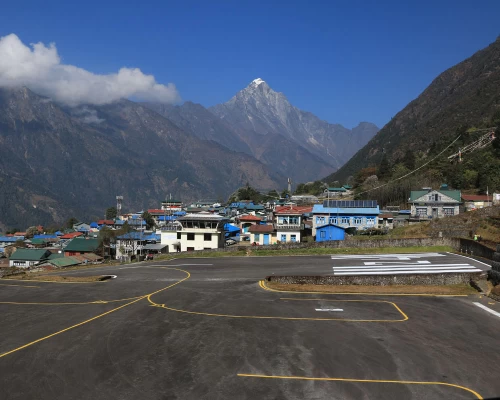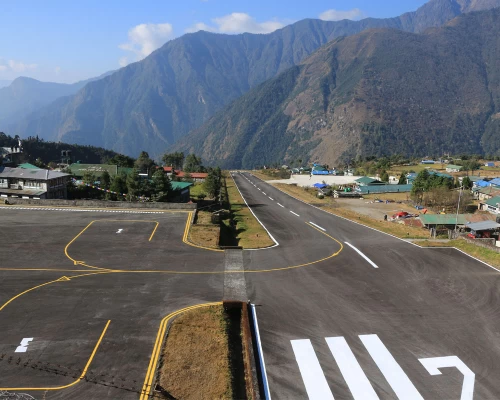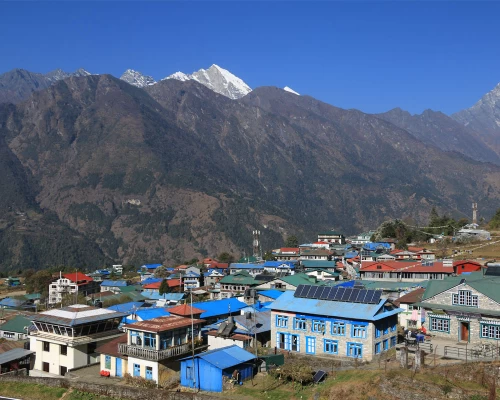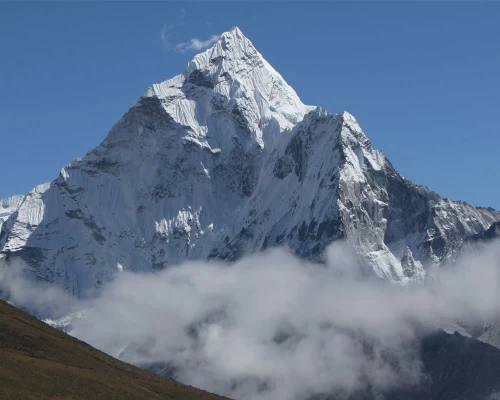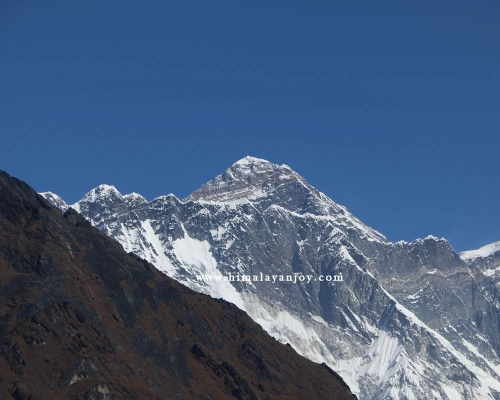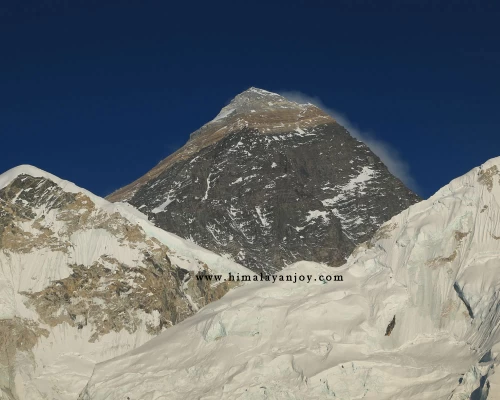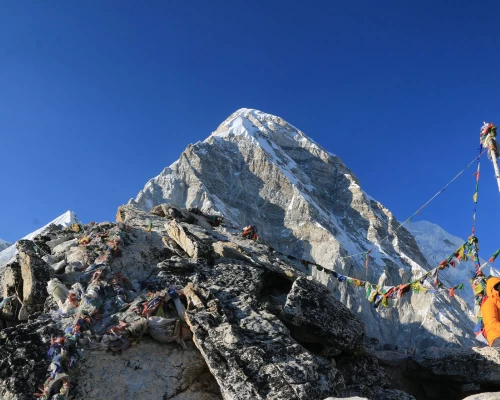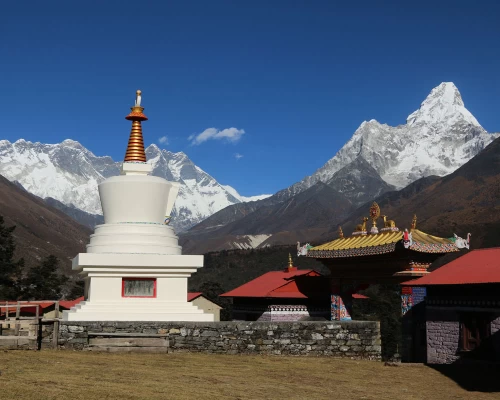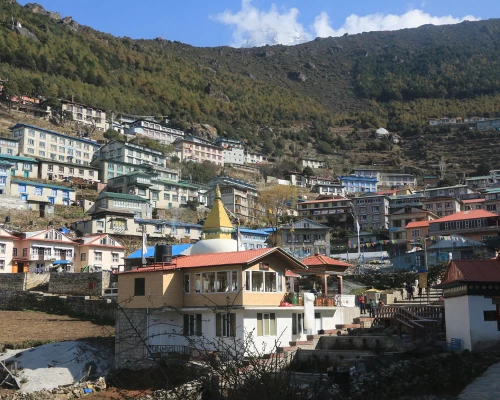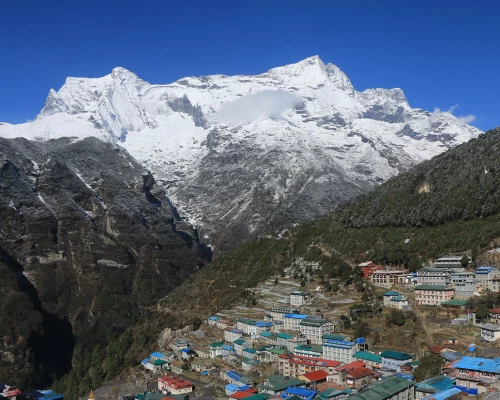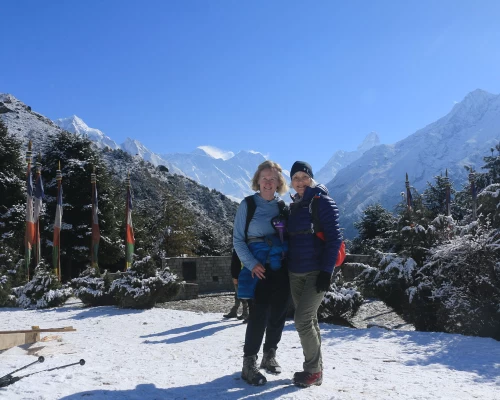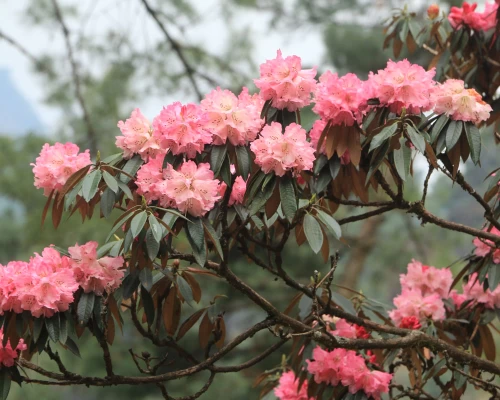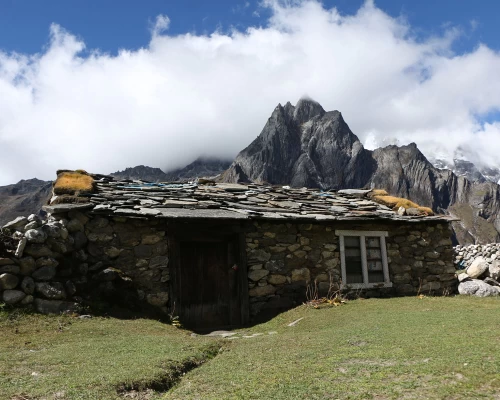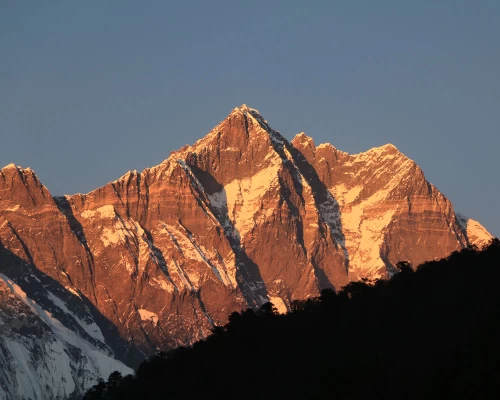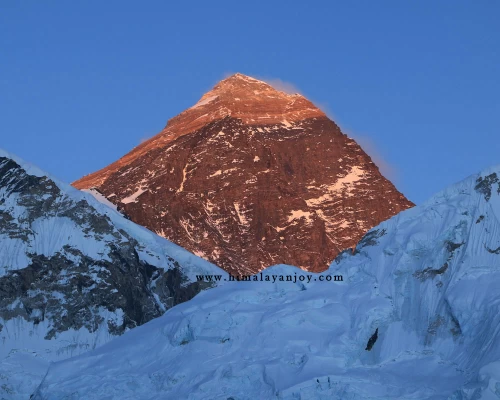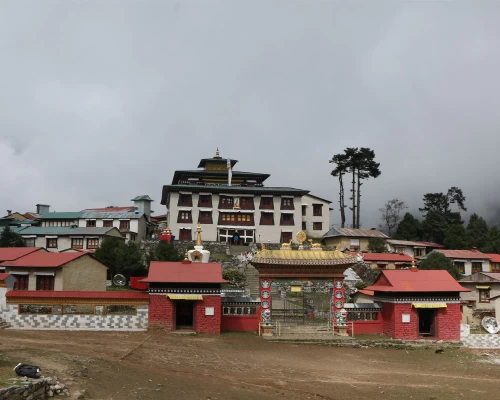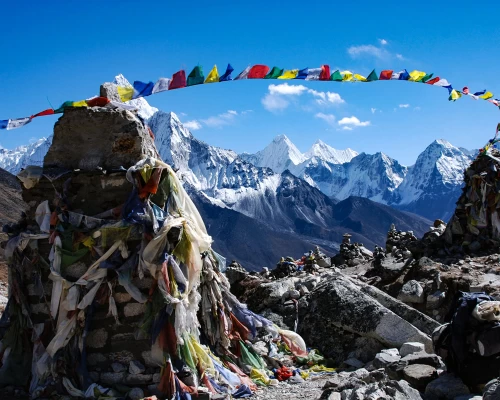Best Time to Trek to Everest Base Camp
The best times to trek to Everest Base Camp are during spring (before the monsoon) and autumn (after the monsoon). These two seasons offer the most stable weather, clear mountain views, and comfortable temperatures for trekking.
Spring (Late March to Early June)
Spring is one of the most popular times for the EBC trek. The days are longer, temperatures are mild, and the weather is generally clear. The hills come alive with blooming rhododendron forests, adding colour to the trails and making the walk even more enjoyable.
Autumn (September to November)
Autumn is another excellent season for the Everest Base Camp trek. After the summer monsoon, the skies are crisp and clear, offering the best mountain visibility of the year. The air is cool but comfortable, and the trails are lively with trekkers from around the world.
Other Seasons
Summer (June to August) brings the monsoon rains, which can make trails muddy and reduce visibility. However, the valleys turn lush and green, and there are far fewer trekkers — a good choice for those who prefer quiet trails and don’t mind a little rain.
Winter (December to February) can be cold, especially at higher altitudes, but it offers clear skies and peaceful trails for those well-prepared for the cold.
Challenges of the Everest Base Camp Trek
The Everest Base Camp Trek is a rewarding adventure, but it also comes with real challenges. The route starts in Lukla (2,860m) and climbs up to Everest Base Camp (5,364m) over about 12 trekking days, with changing terrain and altitude. Being aware of the main difficulties helps you prepare better for the journey.
1. High Altitude
The biggest challenge is altitude. Many trekkers experience mild symptoms like headaches, loss of appetite, or fatigue as they ascend higher. Taking time to acclimatize properly and walking at a steady pace are essential to stay healthy and avoid altitude sickness.
2. Weather Conditions
The weather in the Everest region can change quickly. It can be very cold, windy, and snowy, especially at higher altitudes. Even during the main trekking seasons — spring (April–May) and autumn (September–October) temperatures can drop below freezing at night. Proper gear and warm clothing are must-haves.
3. Tough Trails
The trek involves long walking days, steep climbs, and rocky paths. You will cross multiple suspension bridges and cover 8–15 km a day on average. Good fitness and stamina are important, but anyone who prepares well can handle the challenge.
4. Basic Accommodation
Teahouses along the trail provide simple lodging and meals. Rooms are usually small with shared bathrooms, and heating is limited. While basic, these teahouses offer a cozy, authentic trekking experience and warm Sherpa hospitality.
5. Logistics and Planning
Flights to Lukla are weather-dependent, and delays can happen. You will also need the right permits and to plan for acclimatization days. Traveling with an experienced guide or agency helps handle these logistics smoothly and safely.
At Himalayan Joy Adventure, our 15-day Everest Base Camp itinerary is designed to balance the trek’s challenges with enough rest and acclimatization. With proper preparation, the right mindset, and our experienced team, you can complete the journey safely and make it one of the most memorable adventures of your life.
Necessary Preparations for Trekking to Everest Base Camp
Preparing well before your Everest Base Camp trek makes a big difference in how much you enjoy the journey. Fitness, mindset, the right gear, and careful planning all help you walk confidently and safely in the high Himalayas.
Physical Training
Start your training at least two to three months before the trek. Focus on building strength, stamina, and endurance.
Do exercises that mimic trekking conditions — long walks, uphill climbs, stair workouts, or hikes carrying a light backpack. Add cardio training such as jogging, cycling, or swimming to improve your breathing and energy levels at high altitude.
Combine this with light strength exercises like squats, lunges, planks, push-ups, and shoulder presses. Gradually increase your intensity over time. Remember to rest and recover between workouts — consistency is more important than intensity.
Mental Training
Trekking to Everest Base Camp is as much a mental challenge as a physical one. The trail can be tiring, and conditions are basic compared to city life. A positive mindset and flexibility go a long way in helping you adapt to the mountains.
Practice staying calm and patient — weather delays, limited facilities, or simple food are all part of the adventure. Yoga, meditation, or mindful breathing can help build mental strength and focus.
If you are new to trekking, try easier routes like Annapurna Base Camp or Langtang Valley first to build confidence before taking on Everest Base Camp.
Proper Gear and equipments
Having the right gear keeps you comfortable and safe in changing weather. Pack warm clothing in layers — thermal base layers, fleece, and a down jacket for higher altitudes.
Essentials include:
2–3 long-sleeve shirts and 2 trekking pants (avoid jeans)
A windproof jacket and raincoat
Wool or synthetic socks, gloves, hat, and neck gaiter
Durable trekking boots, sandals, and trekking poles
Sunglasses and sunscreen for UV protection
Personal items:
Toilet paper, hand sanitizer, baby wipes, moisturizer, Vaseline, sanitary pads (if needed), and a small medical kit with bandages, painkillers, etc.
Here’s a detailed list of all the gear you will need for trekking. Click here.
Proper Diet and Hydration
Nutrition and hydration are key to staying strong on the trail. Eat a balanced diet with enough protein, complex carbs, and healthy fats during training and trekking.
During the trek, drink plenty of water — at least 4–5 liters per day. Start your morning hydrated and sip water regularly throughout the day. Avoid drinking too late at night to ensure good sleep. Staying hydrated helps your body adjust better to altitude.
Travel Insurence
Make sure you have travel insurance that covers:
High-altitude trekking (above 5,000m)
Emergency helicopter evacuation
Medical treatment and trip cancellations
Check the policy carefully before buying, it is one of the most important safety measures for the
Everest Base Camp trek.
Necessary Documents for the 15 Days Everest Base Camp Trek
To trek to Everest Base Camp, you need two main permits: the Sagarmatha National Park Entry Permit and the Khumbu Pasang Lhamu Municipality Entry Permit. These permits allow you to travel through the Everest region legally and support local conservation and community projects.
At Himalayan Joy Adventure, we handle both permits for you, so the process is quick and hassle-free.
Sagarmatha National Park Entry Permit:
This permit is required because Everest Base Camp lies within Sagarmatha National Park, a UNESCO World Heritage Site.
You can obtain it from the Nepal Tourism Board office in Kathmandu or at the Monjo checkpost, near the park’s entrance if you’re already on the trail.
Cost: NPR 3,000 per person (approximately USD $25)
Khumbu Pasang Lhamu Municipality Entry Permit:
This local permit was introduced in 2018 to replace the TIMS Card. It supports infrastructure and community development in the Khumbu region.
You can get it from the municipality counter in Lukla or at the Monjo checkpost.
Cost: NPR 2,000 per person (approximately USD $17)
Travel Insurance Requirements for the 15 Days Everest Base Camp Trek
Travel insurance is one of the most important things to arrange before trekking to Everest Base Camp. It gives you peace of mind and ensures that you’re protected if anything unexpected happens during your trip.
We strongly recommend getting comprehensive insurance coverage that includes:
Emergency helicopter evacuation (required for remote regions like the Everest area)
Medical treatment and hospital care
Coverage for altitude-related illnesses or injuries
Trip cancellations, delays, or interruptions
Lost, stolen, or damaged baggage and equipment
Make sure your policy covers high-altitude trekking (up to 6,000 meters) and confirm this directly with your insurance provider before purchasing.
With proper insurance, you can travel confidently, knowing that you’re covered for emergencies and can fully enjoy your adventure without unnecessary stress.
Phone, Wifi and Equipment charging during 15 Days Everest Base Camp Trek
Wi-Fi and mobile networks are available along most parts of the Everest Base Camp Trek, but the connection becomes weaker as you go higher. Namche Bazaar offers the most reliable service, with several internet cafés and Wi-Fi-enabled lodges. Beyond that, expect slower speeds and occasional outages — some remote villages may have no coverage at all.
To stay connected, you can buy a local SIM card (NTC or Ncell) in Kathmandu. However, coverage is limited in higher regions. The most dependable option is to use Everest Link Wi-Fi cards, available at many teahouses throughout the trek. These prepaid cards let you access Wi-Fi at designated hotspots from Lukla up to Gorakshep.
For charging, most teahouses provide paid charging services for phones, cameras, and batteries. The cost increases with altitude (usually NPR 200–500 per charge), so carrying a power bank or solar charger is highly recommended.
For more information, check out our detailed blog on the topic: "Can we get WiFi or phone coverage on the Everest Base Camp trek?"
Flight Delays and Cancellations during Everest Base Camp Trek
Flights between Kathmandu or Ramechhap and Lukla are highly weather-dependent. Poor visibility, strong winds, or changing conditions can sometimes cause delays or cancellations. This is a normal part of trekking in the Everest region, and being flexible helps ensure a stress-free experience.
We suggest to include an extra buffer day at the end of your itinerary to manage such situations. If flights are delayed for more than two days, we can help arrange a helicopter transfer to or from Lukla to keep your schedule on track.
The cost of a helicopter flight generally ranges between USD 500 and USD 4,000, depending on weather conditions, group size, and availability. In many cases, you can claim this cost through your travel insurance if your flight is canceled due to weather.
Everest Base Camp Trek Booking Procedure
Himalayan Joy Adventure is a trusted trekking agency committed to providing safe, reliable, and enjoyable trekking experiences in Nepal. The company is officially registered with the government and is affiliated with well-known goverment level organizations like the Nepal Tourism Board.
The 15 days Everest Base Camp trek is an exciting journey to one of the world’s most famous destinations. Known for its breathtaking views and rich culture, this trek is a once-in-a-lifetime adventure. Himalayan Joy Adventure invites you to join this amazing trip and make unforgettable memories.
To confirm your booking, you need to pay a 30% deposit, which is non-refundable. This amount helps cover important costs like hotels, permits, transportation, and guides. The rest of the payment can be made when you arrive in Nepal, either in cash or by credit card, making it easy and convenient.
When booking, you will need to provide a copy of your passport and travel insurance. These are needed to complete your reservation and make sure everything runs smoothly. With all the details taken care of by Himalayan Joy Adventure, you can focus on enjoying your trek to Everest Base Camp.



